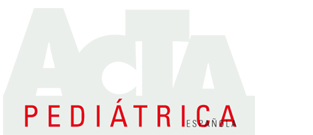Publicado en
Nutrición infantil
La fibrosis quística en la actualidad (II): aspectos nutricionales
Cystic fibrosis at the present time (II): nutritional aspects
A. Sojo Aguirre, C. Bousoño García1Unidad de Fibrosis Quística. Hospital de Cruces. Barakaldo (Vizcaya). 1Unidad de Fibrosis Quística. Hospital Universitario Central de Asturias. Oviedo














